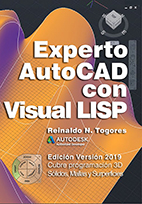
Reinaldo N.Togores. Premisas para un Diseño Industrial Cubano, mimeographed document. La Habana, 1971.
Our life is largely conditioned by designed objects. So close is the relationship between our activities and objects which concur in them, that we can reconstruct the life of a long ago disappeared culture based only on the remains of their utensils. Clothing, furniture, utensils and other items that a civilization uses have always been its most faithful image. Always but in our time. Today useful objects -and increasingly the aesthetic ones- are reproduced in growing quantities by industry. But the bulk of industrial production is concentrated in a small number of countries. Those who lack adequate facilities shall be limited to acquire, in exchange for raw materials and at increasingly high prices, objects characteristic of an alien culture. Now, laying the foundations of our own industry, we create the conditions for the recovery of an appearance which is truly ours. One by one, each new product from our industry that reaches the people, will contribute to the realization of this renewed environment to which we aspire. The choice of the shape for the objects that our industry will produce involves decisions of great importance. For the industrial designer responsible for this task no object lacks significance. If its design is correct, every object encloses a lesson of order; it is just a special case within this comprehensive program for the design of the society to which we aspire. We are not satisfied for its characterization with the formal residues of a more or less distant past. The incorporation of cultural values from the past does not justify the imitation of a formal language that responds to social and technological conditions long ago disappeared. We must seek sound principles for action by the rigorous analysis of our reality and its fundamental development trends.  Thus, although the persistence of a certain typology -as in the case of the rocking chair- can be inferred from ecological and cultural constants, the final shape will be affected by the choice of technologies and materials as well as factors related to the scale of our current dwellings.  From these factors the necessity is also derived for folding, collapsible, transformable furniture that will ensure a more efficient use of built space. Moreover, a number of different lamps emerge from study of the role that artificial lighting plays in the dwelling: from the diffuse ambient light up to that which can be controlled, precisely directed to where it is needed. | For these objects tradition does not provide many precedents. Some are already a reality in our industrial designers' prototypes. In them we have a glimpse of the features of that environmental countenance that we aspire to. First, the search for a synthetic expression where the superfluous, the merely decorative is rejected for the sake of structural clarity and a more rigorous functionality. A close correspondence between aesthetics and intentions is evident in the choice of forms -the circle, the triangle, the square- always the most elementary, the repeated use of primary colors and the clear articulation of the various components, where the design of the joints is often loaded with a strong expressive content. This does not imply an impoverishment of the object's formal qualities; in suppressing the ambiguous and confusing the essentially structural is raised onto a plane of aesthetic significance and further allows achieving a higher synthesis in which the object is no longer appreciated in isolation, but in terms of its role in the characterization of an environment in which this restricted formal vocabulary makes its insertion possible.  For example, a lamp and an armchair -distinct themes and materials- are solved on the basis of circles and squares, these forms also preserving one and the same structural sense: The circle as a support and articulation allowing movement both for the seat and for the lampshade. These objects are formally coherent even without having been designed as part of a "set". The possibility of achieving this integration of disparate pieces is imposed by a conception that abandoning old conventionalisms supports the plurality of functions that use superimposes within the same space. The idea of living room, dining room, bedroom "sets", holds for us increasingly less validity. And the type and quantity of items that concur in an ambiance should depend only on their specific functions. Instead of the sofa, a bed allows to use the living room also as a bedroom. Meanwhile bedrooms will no longer be exclusively so, transforming themselves into areas of study, work or living. In that certain totalizing intention at an ambiance scale, and in the reiteration of formal themes, a persistence of that tempered baroque that has characterized the highlights of our cultural past is discovered. But this recovery of the essence in tradition is not imposed as a precondition to the designer's action; it arises from a deep identification with our environmental culture's constants. These premises, on which we base today our work as industrial designers, have -besides a profound cultural meaning- a great importance in the field of the economy, since it is precisely this simplicity and this economy of means, what modern industry requires from designed objects in order to achieve their mass reproduction. |


